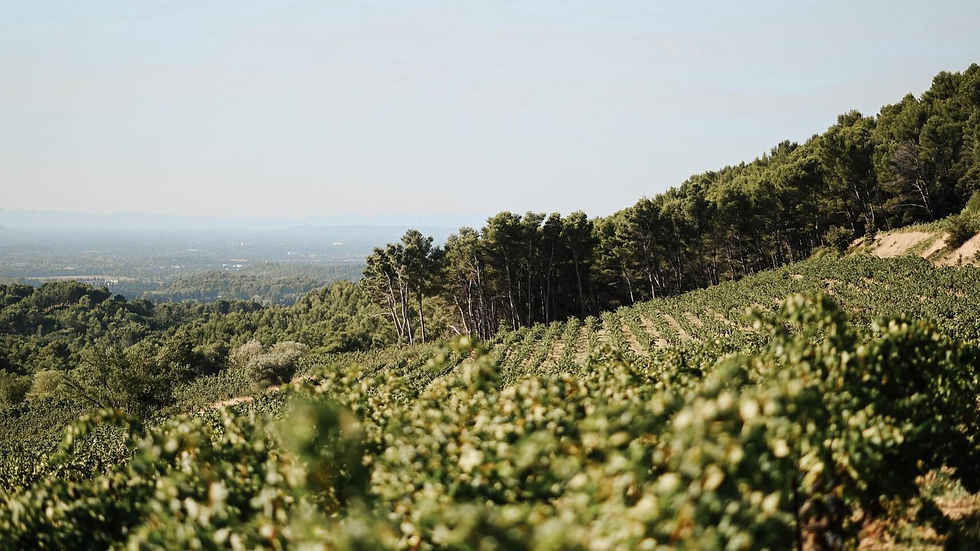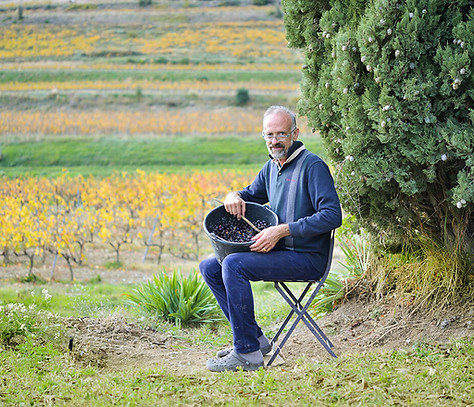
The Land
Nestled in the Dentelles de Montmirail

The Clos de Caveau is located on the border of Vacqueyras and Gigondas in the Southern Rhône region of France. Surrounded by forests and nestled in a secluded valley of the Dentelles de Montmirail, the estate benefits from an unspoilt environment, away from roads and human activity.
Three quarters of the domaine’s 17 hectares of vines surround the 17th century farmhouse where the wines are made. It is here, in this landscape rich in biodiversity, that our philosophy takes root.


Set apart from the rest of the appellation
Unlike the majority of Vacqueyras vineyards which are planted in the plain, the Clos is located in altitude on clay-limestone soil and is protected by hillsides and a belt of mediterranean forest. The distinct geography and environment of the Clos bring a unique character to its wines, prized for their subtlety, complexity and balance.
Rooted in quality
Our vines are planted on slopes at altitudes of around 300m, offering a microclimate with well-drained, low-fertility soil. Hill-side vines are recognised for their low yields which produce wines of exceptional quality and richness, while naturally facilitating organic growing.


Protected from weather extremes
Our position in altitude also offers protection during freezing spells: we remain above the damaging fog which settles in the plain. Similarly, during heatwaves, greater temperature fluctuations that occur between night and day when in altitude aid in preserving freshness in our grapes.
A history of research and experimentation
When Henri Bungener took over from his father, he began minutely exploring the unique terroirs of the estate. With a background in psychoanalysis, his analytical approach led him to discover that, though they share the same geological epoch, there are millions of years of difference between the rock stratum of each adjacent field around the Clos.

Organic agriculture pioneer since 1980
Shortly after taking over the domaine from Stephen Spurrier in the 1970s, Gerard Bungener converted the entire estate to organic. This was an unusual decision at a time when organic was still considered strange and inferior, with Gerard even telling his children for a number of years not to tell the customers. In reality, however, all wine, fruit and vegetables were organic until the advent of synthetic pesticides in the 1950s.

Video: The Oligocene valley of the Clos






